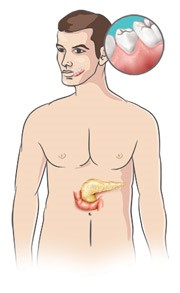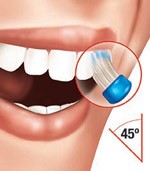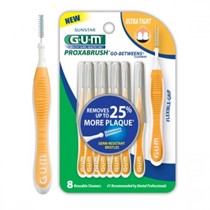Diabetes and Oral Health
I have diabetes.
Diabetes affects several organs and systems throughout the body. The most well-known complications of diabetes include heart disease, poor blood circulation, diminished eye-sight, kidney function, slower healing of wounds and a reduced resistance to infections. Some of these work together and lead to complications in the mouth, such as gum diseases, dry mouth, poor healing, and infections.

MANAGING YOUR DIABETES AND ORAL HEALTH
Diabetes affects several organs and systems throughout the body. The most well-known complications of diabetes include heart disease, poor blood circulation, diminished eye-sight and kidney function, slower healing of wounds, and a reduced resistance to infections. Some of these work together and lead to complications in the mouth. These are:
Gum diseases
Dry mouth
Poor healing
Fungal Infections

Figure: Diabetes may be associated with several complications in the mouth.
If you have untreated gum disease, it may make it harder to control your blood glucose level.
Tell your dentist if you have diabetes and any medications you may be taking. Tell your physician or endocrinologist if you have periodontal or gum disease.
To protect your oral health there are several actions you should take:
Control your blood glucose level. Follow the advice and instructions of your medical professional and attend for routine checks as prescribed.
Take the best care of your teeth and gums every day. Good oral hygiene and plaque control are essential for a healthy mouth and body.
Brush all teeth and gums thoroughly with a good quality toothbrush that is designed to reach into and help clean all the difficult-to-reach areas. It is here that the dental plaque builds-up – especially along the gum margin, under the gums, and between the teeth. Use fluoride toothpaste to help prevent dental decay.

Figure: Toothbrushes with extremely tapered bristles can reach further under the gum and between the teeth in the hard-to-reach areas than regular “end-rounded” bristles.

Hold the brush so the bristles are pointing toward the gum margin at 45 degrees to the tooth roots and move the brush back and forth with short strokes, making sure all surfaces and sides of all teeth get brushed equally. This should take about two minutes to do well. Check with your dental hygienist for the technique that suits your mouth best.

Figure: Position the brush so that the bristles make a 45-degree angle with the tooth.
Between the teeth:
Toothbrushes are not able to clean in the hard-to-reach areas between the teeth – a place where bleeding often occurs and gum disease starts. Each day use an interdental brush to clean between each and every tooth. With the correctly designed product, this between-teeth cleaning is both very simple and very effective. Dental floss may be used in place of, or along with, an interdental brush but is generally perceived to be more difficult.


Visit your dentist as soon as you have received a confirmed diagnosis of diabetes and discuss your current dental health and any changes you should make in your dental routine.


